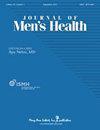Effect of unsupervised Kinect-based mixed reality fitness programs on health-related fitness in men during COVID-19 pandemic: randomized controlled study
IF 0.6
4区 医学
Q4 Medicine
引用次数: 0
Abstract
This study aimed to investigate the effect of Kinect-based mixed reality (KMR) exercise and unsupervised individual exercise on health-related fitness. A total of 27 participants underwent cardiorespiratory fitness tests for the inclusion criteria and were randomly assigned to three groups: a KMR group (KMRG), an unsupervised individual group (UIG), or a control group (CG). Pre and post-tests were conducted to measure Maximum oxygen uptake (VO₂max), body composition, upper and lower-body (LB) muscle strength, and endurance. KMRG and UIG attended exercise sessions 3 days per week for 8 weeks. KMRG used the KMR device and UIG used an instructive banner for exercise. All groups maintained their daily routines and submitted diet records every 4 weeks. Results showed that VO₂max, upper-body muscle endurance, and LB muscle endurance of knee extension was increased in KMRG and UIG. LB muscle strength in knee flexion was increased in UIG and LB muscle endurance in knee flexion was increased in KMRG. VO₂max, LB muscle strength, and LB muscle endurance were greater in KMRG than in CG. LB muscle strength in knee flexion was greater in KMRG than in UIG. Body fat was increased and skeletal muscle mass was decreased in CG. KMR exercise showed better performance than unsupervised individual (UI) exercise, and the exercise program was effective in both KMR and UI environments. These findings contribute to the growing evidence supporting the use of technology-based exercise interventions as a potential strategy to enhance health-related fitness.基于kinect的无监督混合现实健身项目对COVID-19大流行期间男性健康相关健身的影响:随机对照研究
本研究旨在探讨基于kinect的混合现实(KMR)运动和无监督的个人运动对健康相关健身的影响。共有27名参与者接受了纳入标准的心肺功能测试,并被随机分为三组:KMR组(KMRG),无监督个体组(UIG)或对照组(CG)。进行了前后测试,以测量最大摄氧量(vo2max)、身体成分、上半身和下半身(LB)肌肉力量和耐力。KMRG和ugg每周参加3天的锻炼,持续8周。KMRG使用KMR设备,ugg使用指导性横幅进行锻炼。各组维持日常生活,每4周提交一次饮食记录。结果表明,KMRG组和UIG组的vo2max、上肢肌耐力和膝关节伸展时的LB肌耐力均有增加。UIG组膝关节屈曲时LB肌力量增加,KMRG组膝关节屈曲时LB肌耐力增加。KMRG组的vo2max、LB肌力量和LB肌耐力均大于CG组。膝关节屈曲时,KMRG组腰肌力量大于UIG组。CG组体脂增加,骨骼肌量减少。KMR训练效果优于无监督个体(UI)训练,且训练方案在KMR和UI环境下均有效。这些发现有助于越来越多的证据支持使用基于技术的运动干预作为增强健康相关健身的潜在策略。
本文章由计算机程序翻译,如有差异,请以英文原文为准。
求助全文
约1分钟内获得全文
求助全文
来源期刊

Journal of Men's Health
Medicine-Urology
CiteScore
0.70
自引率
28.60%
发文量
153
审稿时长
10 weeks
期刊介绍:
JOMH is an international, peer-reviewed, open access journal. JOMH publishes cutting-edge advances in a wide range of diseases and conditions, including diagnostic procedures, therapeutic management strategies, and innovative clinical research in gender-based biology. It also addresses sexual disparities in health, life expectancy, lifestyle and behaviors and so on. Scientists are encouraged to publish their experimental, theoretical, and descriptive studies and observations in as much detail as possible.
 求助内容:
求助内容: 应助结果提醒方式:
应助结果提醒方式:


